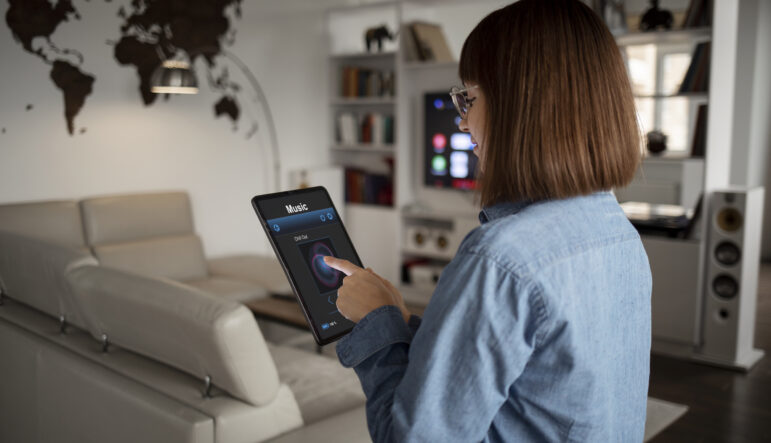Understanding Smart Home Wiring: Preparing Your Home for the Future
One thing about humanity is that they will always find ways to make living convenient for living, and one great example of that is the advent of smart home living. By equipping our homes with smart technology, we practically have a built-in assistant to help us with specific chores and information. In the city of Melbourne, where the residents have embraced modernity and the digital world, you’ll see many of the residents’ homes equipped with smart devices. For today’s article, we’ll discuss all you need to know about smart home wiring and how you can equip your home in the future.
What is smart home wiring?
Smart home wiring refers to the process of connecting smart devices, usually electronics, to your resident’s existing wiring and receptacles. These devices are linked to the internet and your home network via WiFi or ethernet, which allows them to collect and process data to operate. Mobile phones, tablets, and smart speakers are a few examples of said devices, and they are mostly linked to the Internet of Things, which allows them to be controlled from a different location via a remote or an app.
Smart home wiring can easily be done by yourself or with the help of a residential electrician, but it’s best to have your home checked first to see if it can accommodate additional loads, especially when it comes to certain appliances. Just to be sure, call your local Melbourne electricians to have them inspect and check your home. By doing so, they can recommend how to proceed with your smart home wiring, which is crucial to prevent electrical hazards in older homes. In cafes and other businesses, business owners are extra careful and have commercial electricians check their area to avoid overloading and ensure that operations go smoothly.
What are the foundations of smart home wiring?
One core necessity of having a good smart home is the proper electrical wiring system. If you’re planning to equip your house with smart devices, be mindful of the following factors.
See if you have sufficient outlets. Before homes are constructed, professional and licensed electricians are tasked with designing electrical plans, ensuring adequate electrical outlets and spare provisions for future use. Your home should have outlets strategically located in every area of the house where smart devices can be connected. These devices are further categorized into the following:
Make sure to allocate for special circuits. As mentioned above, there are certain appliances that require a special outlet, which are referred to as dedicated circuits; air conditioners and washing machines fall into this category, along with refrigerators. The reason why these appliances have their own circuits is to avoid overloading the circuits, which could lead to possible electrical problems.
Don’t forget your ethernet wiring. Most, if not all, houses today use Wi-Fi for easy internet access. However, it’s still ideal to have a wired Ethernet connection. As convenient as Wi-Fi is, a wired Ethernet connection provides a faster and more stable connection, especially for computers, TVs, and streaming devices.
Allocate coaxial cable. Commonly referred to as coax, coaxial cables transfer high-frequency electrical signals for video, sounds, or data. Although not necessary, it would be ideal to have coaxial cables in your homes since older devices often require them.
What are the benefits of incorporating smart home wiring?
As mentioned before, smart home wiring was conceived as a way to make our lives better, improving our home experience one task at a time. It comes with several advantages, like the following:
It increases the value of your home. Compared to traditional homes, many residents are opting for smart homes, and many other places have seen an increase in demand for such residences. A house with a robust wiring system significantly increases its resale value, which is ideal if you have plans to resell your home.
It boosts connectivity. Many of us have adopted hybrid work settings, while others have ultimately turned to work-from-home setups, which makes internet and high-speed connectivity a necessity—which is all the more reason why you should consider smart home wiring.
It improves performance. Compared to Wi-Fi, wired connections remain supreme when it comes to performance, especially for streaming 4K videos or online gaming.
You’re preparing for the future. Because of the ever-changing needs of consumers, adopting a smart home wiring system is a good investment since it also serves as preparation for future innovations.
How do you incorporate smart home wiring as part of your future home renovations?
You don’t need to renovate your house’s electrical plan to adopt smart home wiring; you can start small by incorporating certain devices that help make your life a little better. If you ever plan on doing so, you might want to consider doing the following:
Adopt home automation systems. Instead of having different apps or remote controls for different devices, try using home automation systems; these systems provide centralized control of various home functions like lighting, temperature, security, and even entertainment. Keep in mind that home automation systems often require a dedicated wiring system for certain components, like controllers or sensors, strategically placed for them to function efficiently.
Consider using fiber optic cables. If you’re looking to boost your internet speed connectivity, consider installing fiber optic cables; compared to regular copper cables, fiber optic cables have a higher bandwidth that allows them to support more devices.
Even though a lot of devices and appliances rely on a wireless connection, having smart home wiring is still essential in every home if you want to embrace future technologies.

